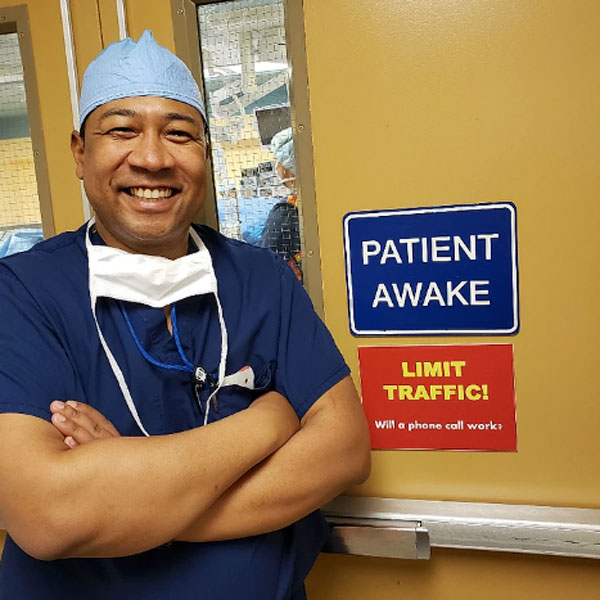
Dr. Ernest Braxton, a Neurosurgeon at Vail-Summit Orthopaedics & Neurosurgery, introduced a first-of-its-kind-in-Vail procedure at Vail Health in Vail, Colorado, completing a successful awake spine surgery.
The surgery, a transformainal lumbar interbody fusion, took approximately 2 hours, during which the patient was awake, alert, comfortable, and able to watch video on an iPad.
“I’m excited to introduce this new minimally-invasive surgery to the Vail Valley,” said Dr. Braxton. “I’m optimistic that this will be the first of many.”
During an awake surgery, the patient is treated with localized pain solutions, avoiding the need for general anesthesia and after-surgery pain narcotics.
“The awake surgery allows me to examine my patients in real time during the procedure, and it eliminates the need to use intravenous narcotics,” said Dr. Braxton. This technique should lead to quicker recovery times and offer several additional benefits to the patient.”
Full Article: Doctor performs first awake spine fusion surgery at Vail Health
Patient Review
“On July 24, 2019, I met with Dr. Ernest Braxton, my neurosurgeon to plan for spine surgery to correct Lumbar Spinal Stenosis. I was advised that surgery would last approximately three hours. I was given the option of foregoing general anesthesia to be fully awake under monitored anesthesia. I agreed to this groundbreaking procedure and was offered the option of watching a movie on an I-Pad for the duration. I proposed a music source on headphones instead and Dr. Braxton thought that was a great idea. I was told to bring my smartphone and headphones to the operation.
I checked in for my surgery on August 1 and was concerned that my smart phone and headphones might not pass the rigorous operation room sanitary standards. The OR team simply wiped them down and that became a non-issue. As the procedure began I lay face down on the operating table with headphones on and began listening to jazz on Pandora. I awaited the inevitable stings from injections. My normal inclination has always been to tense up not knowing the number and intensity of pending injections. I turned my attention to the sounds of jazz, visualizing the instrumentation that I was hearing and relaxed. Very shortly a nurse lifted a headphone to report the injections were complete. Discomfort was minimum. As the operation activity continued I was vaguely aware of background voices and varying pressures on the lumbar area of my back. The access incision was barely noticeable. My jazz concert was only occasionally interrupted by a nurse with a progress report and opportunity to ask questions. I was given a one-word signal to advise if IV anesthesia needed to be increased. Overall the dominant sensory presence was jazz. I was totally dialed in to the varying rhythms, the elusive melodies, and the emotional solos. I have no doubt that the jazz made the overall experience far more tolerable in my fully conscious experience. As I was rolled from the operation room to the recovery room I was struck by how clear my visual and audible senses were. This would not have been the case under general anesthesia. While I rested in the recovery room I could easily see how this could be a one-day outpatient experience. As it turned out, a variety of tests such as oxygen consumption ruled in favor of an overnight observation. The jazz immersion continued in the recovery room and I vowed to make it an integral part of my recovery at home. I was released the next day. Jazz continued to be at the core of my pain management in the following weeks of homebound recovery.
While jazz was my genre of choice, I have no doubt that other music passions such as classical or bluegrass would have similar therapeutic affects during conscious surgery. Surgery centers should be prepared to offer these listening options. The power of music cannot be overestimated.”
